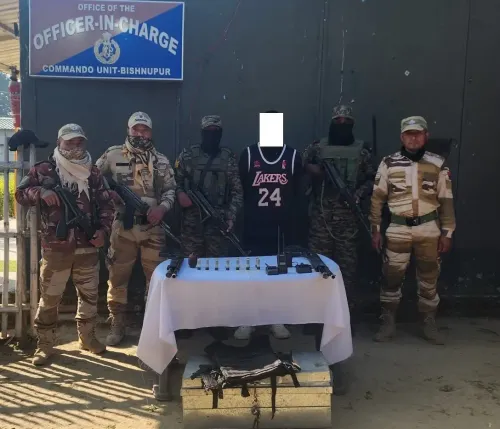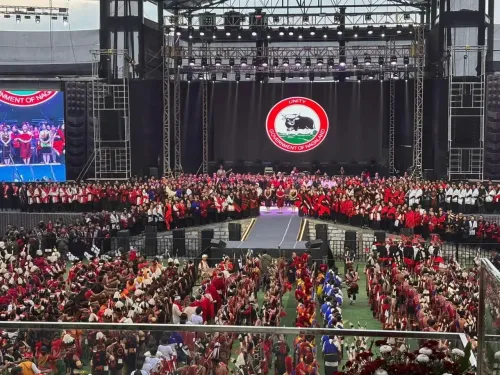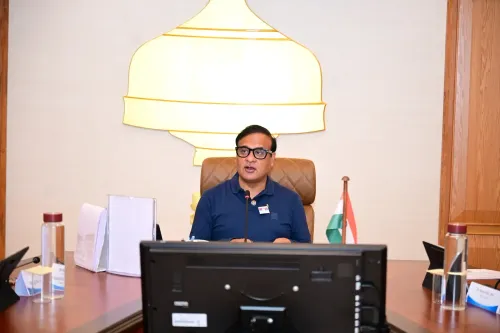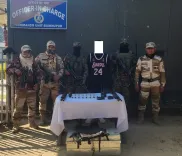What Did Army Chief Witness During Indigenious Drone Warfare Demonstrations?
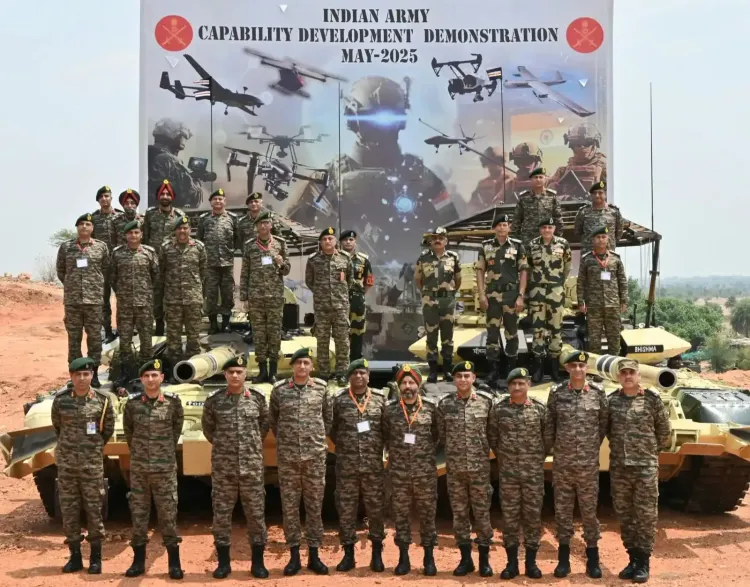
Synopsis
Key Takeaways
- Indigenous UAS enhance real-time surveillance and reconnaissance capabilities.
- Loitering munitions provide precision strikes with the ability to operate autonomously.
- The demonstrations reflect a significant move towards self-reliance in defense technology.
- New strategies aim to integrate private players in defense manufacturing.
- These advancements align with India’s vision of network-centric warfare.
Babina, May 28 (NationPress) General Upendra Dwivedi, the Chief of Army Staff (COAS), observed advanced demonstrations of indigenous Unmanned Aerial Systems (UAS), Counter-UAS technology, and Loitering Munitions at the Babina Field Firing Ranges located in Uttar Pradesh, as reported by the Indian Army on Wednesday.
In an update shared on X, the Army declared, "On 27 May 2025, General Upendra Dwivedi, COAS, observed state-of-the-art demonstrations of indigenous UAS, Counter-UAS and Loitering Munitions at Babina Field Firing Ranges."
"These advanced capabilities will considerably enhance operational efficiency, protect forces, and enable precision engagement across diverse terrains," the announcement further elaborated.
This showcase is part of a comprehensive strategy aimed at strengthening India's defense readiness through sophisticated homegrown technology.
The Army released a series of images and a video from the event, illustrating the employment of cutting-edge drone systems in simulated battlefield scenarios.
The showcased Indigenous UAS is engineered to deliver real-time surveillance, target acquisition, and reconnaissance data in demanding operational contexts.
These systems represent a crucial advancement in the Indian Army's evolution towards a more agile and responsive force, aligning with its broader vision of network-centric warfare and improved battlefield visibility.
Notably highlighted were the loitering munitions -- a novel type of precision-guided weaponry that hovers in target areas, evaluates threat conditions, and subsequently strikes with exceptional accuracy.
These munitions can operate either autonomously or with human oversight and are designed to self-destruct upon impact.
The loitering munitions demonstrated at Babina had previously been utilized during Operation Sindoor, where they effectively neutralized nine high-value terror targets in Pakistan and Pakistan-occupied Kashmir (PoK).
The strategic strikes were executed entirely from Indian territory in response to the Pahalgam terror attack, utilizing precise intelligence to identify the targets.
The Army's focus on integrating advanced drone warfare systems follows the government's recent endorsement of a new 'program execution model' for the Advanced Medium Combat Aircraft (AMCA), the nation’s indigenous fifth-generation stealth fighter initiative.
This model, approved by Defence Minister Rajnath Singh, allows private companies to compete alongside the state-operated Hindustan Aeronautics Limited (HAL), marking a significant shift from long-standing practices that reserved fighter jet manufacturing solely for HAL.
This transition is anticipated to hasten prototype development and facilitate the incorporation of next-generation combat systems into the armed forces.


